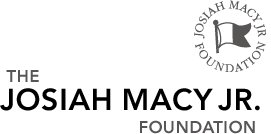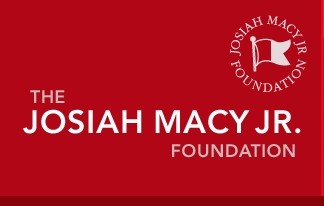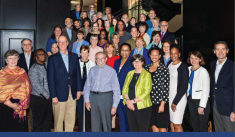Our Grantees
Across the Foundation’s priority areas, our grantees are working to improve the health of the public through innovative research and programs. The Foundation awards up to 40 grants on a rotating schedule each year.
From Campus Curriculum to Rural Community Health Centers: A Statewide Model of Osteopathic IPE
For over 20 years, the University of New England (UNE) has developed and implemented interprofessional education (IPE), mostly in classroom and other on-campus settings with students from its 15 health profession degree programs. However, in 2012, faculty partnered with primary care clinical sites to develop pilot interprofessional practice clerkships for osteopathic medical and other health professions students, such as pharmacy, physician assistant, nursing, and dental medicine students.
“With support from the Josiah Macy Jr. Foundation, these interprofessional clerkships have expanded to include 15 primary care sites. This last academic year 159 students participated, including 86 osteopathic medical students,” explained Dora Anne Mills, MD, MPH, FAAP, vice president for clinical affairs at UNE. “Most of these sites are federally qualified health centers (FQHCs) in rural Maine, which provide unique opportunities for interprofessional teams of students, including exposure to health care and culture in an underserved area; sharing the experience with another student; and adding value to the clinical site.”
Most commonly, osteopathic medical and pharmacy students are paired together. Twice a week they spend time participating in interprofessional learning activities such as seeing complex patients in the patient’s home or practice setting; participating in quality improvement activities; or engaging in population health interventions. The students and clinical sites choose from a menu of learning activities in UNE’s Clinical Interprofessional Curriculum (CIPC) that are designed to add value to the clinical site. Developed by Dr. Mills, CIPC is based on the NCQA’s Patient Centered Medical Home standards with integrated IPEC competencies, thus helping clinical sites to meet these standards as well as developing team skills among students.
However, matching clinically-based learning activities with the needs of clinical sites is not the only matching challenge. “It is also important that we match the right student with each rural site. In order to increase the chances of a good match, we developed the Care for the Underserved Pathway Scholars Program, known as CUP,” said Jane Carreiro, DO, dean of UNE’s College of Osteopathic Medicine. “Offering these CUP Scholars brief rural immersions and more intense interprofessional activities starting in the first year of their health professions education increases the likelihood of us successfully matching them with a rural site for an extended clerkship later in their training. Additionally, the CUP Scholars Program provides us with a “sandbox” to try new ideas. For instance, we stay in close touch with this smaller group of students through monthly lunches, we pilot a variety of interprofessional learning activities throughout their education, and we continuously modify our strategies through the use of rapid cycle evaluations. One main lesson we have learned from them is that often the best new ideas come from the students themselves!”
Other Lessons Learned from the Team
- Work collaboratively with clinical sites. When developing interprofessional learning experiences for students in clinical sites, it is important to work alongside clinicians to determine how students can add value to the site and what will be successful for that particular setting.
- Don’t wear out your welcome. Rural communities often roll out the red carpet for students, and as a result, often need to limit the number of student teams they can host every year, and especially over the summer and holiday times when their staffing can be short.
- Seek creative solutions to common challenges. Other scheduling conflicts can be very challenging as well, but they often just require a dose of creativity to address. For instance, it is sometimes impossible to schedule two students from different professions in a rural site at the same or even occasionally during overlapping times, especially since each health profession program adheres to different calendars. However, in that case, UNE has developed interprofessional learning experiences for individual students, such as seeing complex patients with a dentist or social worker, participating in home visits with a nurse or social worker, or working with community nutrition educators who serve low income populations (e.g., through SNAP-Ed). The goals are the same – to increase interprofessional competencies among students and to add value to the clinical setting.
Besides building opportunities for interprofessional clinical learning experiences in underserved rural locations, another main goal of the Macy grant is to create a four-year interprofessional osteopathic medical curriculum. Shelley Cohen Konrad, PhD, LCSW, FNAP, who is a faculty leader for on-campus IPE at UNE, notes how important it is to ensure IPEC competencies are integrated throughout the four-year curriculum. “One critical lesson we’ve learned is that if the foundational building blocks of IPE are constructed during students’ pre-clinical years, and interprofessional learning activities are built into the clinical curriculum, then our students not only graduate team-ready, but they are often catalysts for change in clinical settings, helping their clinical mentors from different professions to learn from, with, and about each other. And after all, a lifelong learning from, with, and about each other and our patients is what IPE is all about.”





 11.13.18
11.13.18